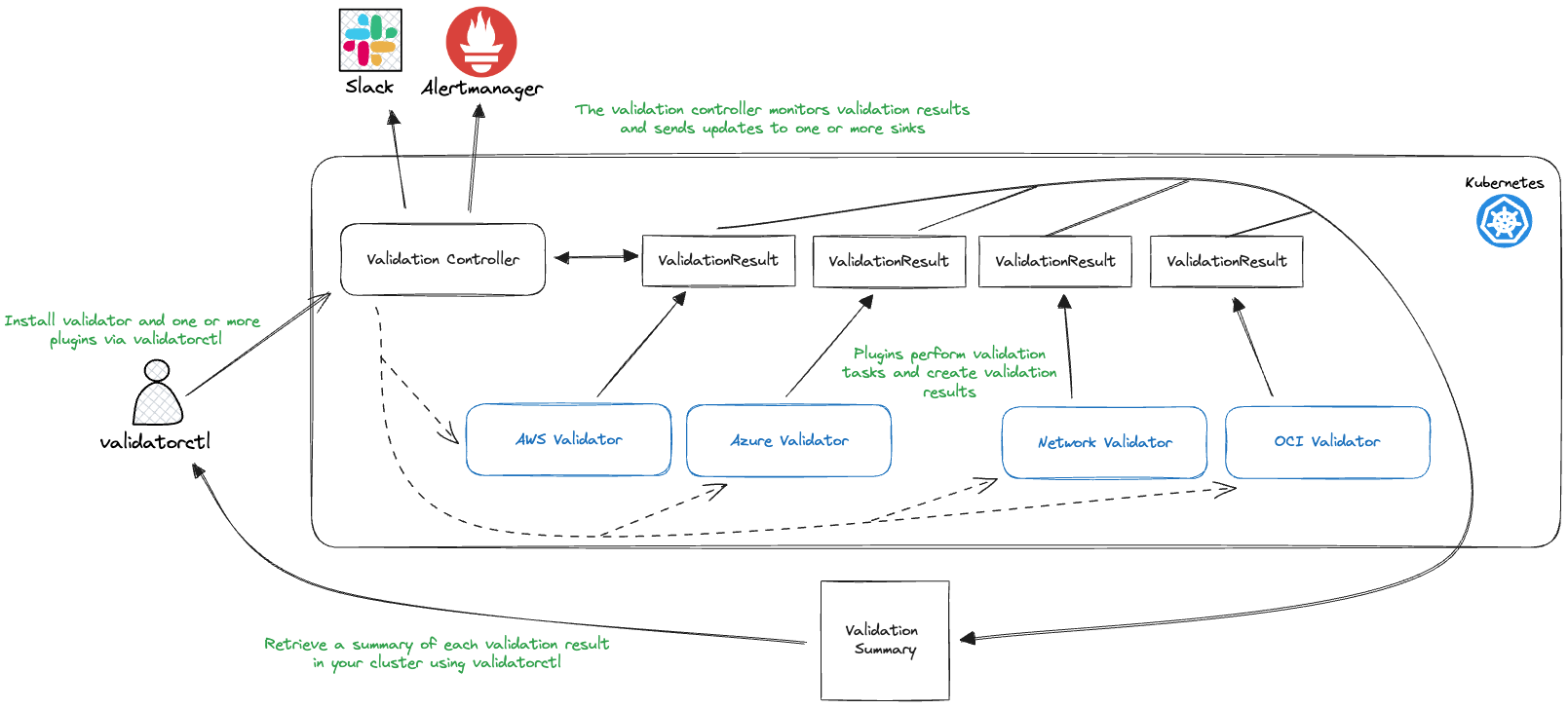Architecture
Overall architecture
Validator consists of multiple components - its CLI, multiple Kubernetes controllers, and multiple CRDs (custom resource definitions).

Not shown in the architecture diagram currently is the fact that validatorctl can also execute rules directly. In this mode, validatorctl does not interact with the Kubernetes cluster. It displays validation results instead of saving ValidationResult CRs.
Components
validatorctl
A CLI to help with defining and executing rules, and interacting with the Kubernetes cluster used to execute rules.
Core
The core validation controller installs plugins given a config file. It also contains the ValidationResult CR, which is used to store validation results for any type of rule.
Plugins
Each plugin is a controller capable of reconciling <PluginName>Validator CRs.
Each of these validator CRs define one or more rules that can be provided in its spec. Reconciling them creates a ValidationResult CR for each validator CR, indicating whether validation succeeded or failed along with details for failures.
Official and community plugins
The architecture enables new types of validation to be provided by any plugin. Right now, the only plugins are official ones (see Repositories), but it is possible for new plugins to be developed in the community.
We will describe community plugins in more detail later, but if you want to get started creating a plugin now, feel free to get in touch.